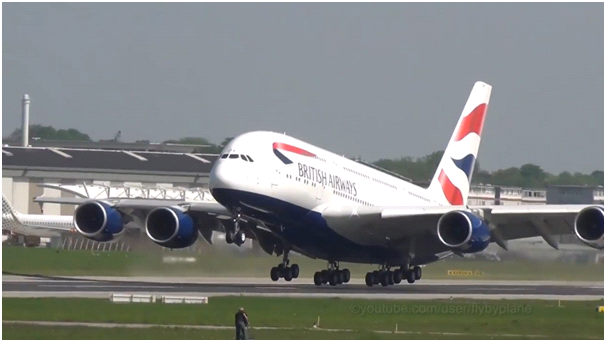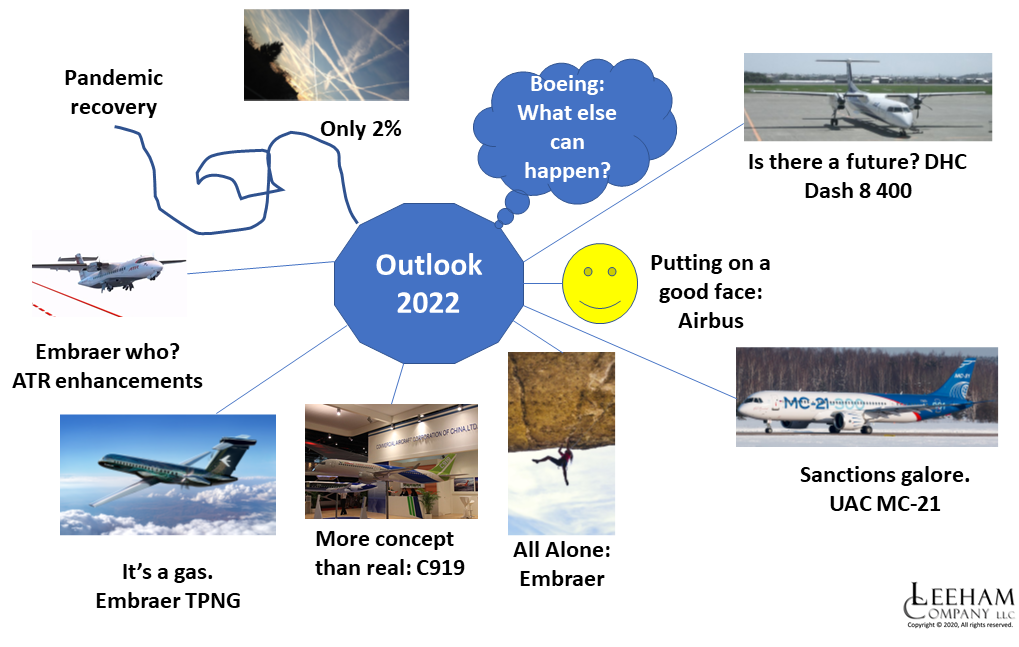Leeham News and Analysis
There's more to real news than a news release.
Pontifications: EADS went ahead with tanker bid despite long odds against winning
Third in a Series
Dec. 20, 2021, © Leeham News: When EADS, then the name of the parent of Airbus, decided to go it alone and bid for the US Air Force contract for the KC-X aerial refueling tanker, officials knew it was an uphill battle.
Despite winning the contract in Round Two, with Northrop Grumman as the lead, the parameters of the competition changed. No longer would the A330-200-based tanker get credit for its greater capabilities that won it the contract in Round Two. Now, the ancient Boeing KC-135 was the baseline to meet. Any bidders—Boeing and EADS—would receive only a pass-fail rating for meeting the baseline.
If the bid price was within 1% of each other, then EADS would receive credit for the extra capacity afforded the A330 tanker over Boeing’s KC-767 offer.
The pass-fail approach caused Northrop to take one look at decide to withdraw from the competition. EADS officials made the decision to proceed anyway, knowing now that winning was unlikely.
One A380 departure of two 777-200ER alternatively 787-9? Part 3.
Subscription Required
By Bjorn Fehrm
Introduction
December 16, 2021, © Leeham News: Last week, we discussed the economics for an airline that dispatches one A380 instead of two smaller widebodies on a trunk route with heavy traffic.
Our example modeled British Airways, which uses the A380 on its highest volume Heathrow departures. Now we finish the series by going deeper into the analysis, examining all cost and revenue aspects, including looking at slot values on congested airports.
Summary
- The ultimate decision to fly one departure or two per departure wave on slot-constrained airports is the value of using one slot or two to transport x passengers on an airport like London Heathrow.
- We develop the revenue and costs factors and discuss the airline’s intangible values around this dilemma.
2022 Outlook depends largely on pandemic, Boeing recovery
Subscription Required
By the Leeham News Team
Dec. 13, 2021, © Leeham News: Attempting a forecast for the new year historically has been reasonably easy. One just started with the stability of the current years, and maybe the previous one or two years, and looked forward to next year.
Until the Boeing 737 MAX grounding, COVID-19 pandemic, and the Boeing 787 suspension of deliveries.
These events upended everything. Boeing’s outlook for 2020 depended on what happened to return the MAX to service. The grounding, initially expected by many to be measured in months, ultimately was measured in years.
The 2020 outlook for the rest of the aircraft manufacturers blew up that March with the global pandemic.
Then, in October 2020, Boeing suspended deliveries of the 787, exacerbating its cash flow crunch.
Commercial aviation began to recover some in late 2020. Airbus, which reduced but didn’t suspend deliveries throughout 2020, saw signs of hope for the narrowbody market—less so for widebody airplanes.
There is a lot of uncertainty, however, that makes looking even one year ahead challenging.
Pontifications: Applying commercial production principles to the A330 MRTT
Second in a series.
Dec. 13, 2021, © Leeham News: When EADS, the forerunner of Airbus Group, pondered whether to proceed on its own to compete with the A330 MRTT for the US Air Force’s aerial tanker competition, the factors went well beyond the tanker.
Plans for the Airbus A320 program, production ramp-up, and potentially a US final assembly line also were weighed.
“An assessment was made as a consequence of having been through the competition once before and learning from that,” said Sean O’Keefe. O’Keefe was CEO of EADS North America at the time.
Then, O’Keefe said in an interview with LNA in October, was the realization of what Airbus was doing to really ramp up production on A320s. Airbus had a plethora of things to figure out what that would take.
One A380 departure or two 777-200ER alternatively 787-9? Part 2.
Subscription Required
By Bjorn Fehrm
Introduction
December 9, 2021, © Leeham News: Last week, we checked the economics for an airline that dispatches one A380 instead of two smaller widebodies on a trunk route with heavy traffic.
Our example was modeled after British Airways, which uses the A380 on its highest volume Heathrow departures. We modeled flights where we only considered the passenger payload and looked at operating costs. Now, we add cargo to the mix and look at the generated on the flights.
Summary
- The A380 was surprisingly competitive against the compared aircraft when we looked at passenger traffic.
- As expected, when cargo is added, the A380 competitiveness declines. It’s now a matter of what a slot more costs on the departure and destinations airports.
A short history of production system development
Subscription Required
By the Leeham News Team
Dec. 6, 2021, © Leeham News: Long ago, aircraft were simple, made of steel tubing, wood, and fabric. Engineering staffs were small, and the craftsmen building them had little need for specific production planning instructions because they were very simple. This was the work environment

Boeing Model 40 at the Museum of Flight, Seattle.
when CAM4B and CAM 18, the Civil Aeronautics Board Manual 4b and 18, described how aircraft were designed, certified, built, and maintained. Think of Ford Trimotors, Fokker F10, Boeing Model 40s and 80s, and Lockheed Vegas. It was the golden age of air transport.
Pontifications: Retrospective of KC-X tanker competition
The first in a series.
By Scott Hamilton
Dec. 6, 2021, © Leeham News: The US Air Force began the process this year to procure the KC-Y aerial refueling tanker.
Originally, this was to follow the KC-X (awarded to Boeing in the form of the KC-46A) to replace the McDonnell Douglas KC-10. This has been altered to be a bridge tanker between the KC-X and the KC-Z, an advanced tanker design that is in the conceptual stage.
The KC-Y promises to be a contest between Boeing, for more KC-46 orders, and a partnership between Lockheed Martin and Airbus based on the A330-200 MRTT. MRTT stands for Multi-Role Tanker Transport. The Lockheed Martin plane is called the LMXT, for now.
The KC-X competition was bitter and repetitive. A partnership between Northrop Grumman and Airbus initially won the contract. But Boeing protested how the USAF scored the bake-off. The General Accounting Office upheld the protest. A new competition saw the contract awarded to Boeing.
KC-Y is only in the Request for Information stage and neither Boeing nor Lockheed have submitted filings yet. But already, the surrogate Boeing campaign appears underway.
One A380 departure or two 777-200ER alternatively 787-9?
Subscription Required
By Bjorn Fehrm
Introduction
December 2, 2021, © Leeham News: With the last Airbus A380 rolling of the production line in days, we started looking at why the A380 didn’t sell last week. Now we check its economics for an airline that can fill it. We fly one A380 versus two departures of smaller aircraft on a typical trunk route.
Our analysis takes British Airways as an example and whether it shall use an A380 on Heathrow to LAX at peak traffic or rather two departures with its Boeing 777-200ER or 787-9.
Summary
- When you can fill the A380, it’s surprisingly competitive even against a more modern aircraft like the 787-9.
- This is when we focus on passengers and cost.
- We change the analysis angle next week when we add cargo and look at margins rather than cost.
HOTR: 787 delivery restart appears to slip to April: customers
By the Leeham News Staff
Nov. 30, 2021, © Leeham News: Plans to resume deliveries of the Boeing 787—halted since October 2020—appear to be slipping again.
Customers tell LNA that deliveries may not resume until April, a slip of one or two months from the previous unofficial timeline. Boeing hasn’t  announced any timeline, deferring to the Federal Aviation Administration’s review of plans to fix issues related to composite delamination and fuselage section mating.
announced any timeline, deferring to the Federal Aviation Administration’s review of plans to fix issues related to composite delamination and fuselage section mating.
“As we have previously shared, we are completing comprehensive inspections and associated rework across 787 production and within the supply chain, while holding detailed, transparent discussions with the FAA, suppliers, and our customers,” a Boeing spokesperson wrote LNA in an email.
“Work continues in our production facility and rates will continue to be dynamic as we focus on eliminating traveled work and prioritize resources to support our inspection and rework efforts. We are taking the time needed to ensure the highest levels of quality, and while these efforts will continue to impact deliveries, we’re confident this is the right approach to drive stability and first-time quality across our operations and to position the program for the long term as market demand recovers. None of the issues have been determined to present a safety of flight concern with respect to the active in-service fleet.”
Related Article





